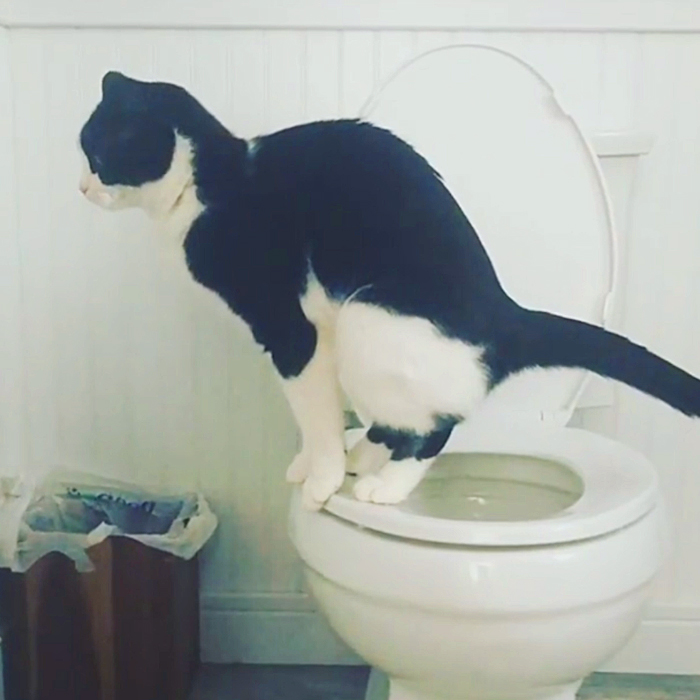Just how do you really feel with regards to Can You Flush Cat Poo or Litter Down the Toilet??

Introduction
As cat owners, it's essential to bear in mind how we deal with our feline buddies' waste. While it might seem practical to flush pet cat poop down the bathroom, this technique can have harmful repercussions for both the setting and human health.
Alternatives to Flushing
Luckily, there are safer and extra liable means to dispose of cat poop. Consider the adhering to options:
1. Scoop and Dispose in Trash
The most common technique of taking care of pet cat poop is to scoop it right into a naturally degradable bag and throw it in the garbage. Make certain to use a specialized trash scoop and dispose of the waste quickly.
2. Use Biodegradable Litter
Select naturally degradable cat trash made from materials such as corn or wheat. These clutters are environmentally friendly and can be securely gotten rid of in the garbage.
3. Hide in the Yard
If you have a lawn, think about hiding feline waste in a marked area far from veggie yards and water sources. Make certain to dig deep enough to avoid contamination of groundwater.
4. Install a Pet Waste Disposal System
Invest in a pet garbage disposal system specifically developed for pet cat waste. These systems utilize enzymes to break down the waste, reducing odor and environmental effect.
Health Risks
Along with environmental concerns, purging pet cat waste can likewise posture wellness dangers to people. Pet cat feces may contain Toxoplasma gondii, a bloodsucker that can cause toxoplasmosis-- a potentially extreme health problem, particularly for expecting females and individuals with damaged immune systems.
Ecological Impact
Purging cat poop introduces damaging pathogens and parasites into the water supply, positioning a significant threat to water communities. These impurities can negatively impact marine life and compromise water high quality.
Conclusion
Accountable animal ownership prolongs past providing food and shelter-- it additionally involves proper waste management. By refraining from flushing cat poop down the commode and opting for alternative disposal techniques, we can lessen our ecological footprint and shield human health.
Why Can’t I Flush Cat Poop?
It Spreads a Parasite
Cats are frequently infected with a parasite called toxoplasma gondii. The parasite causes an infection called toxoplasmosis. It is usually harmless to cats. The parasite only uses cat poop as a host for its eggs. Otherwise, the cat’s immune system usually keeps the infection at low enough levels to maintain its own health. But it does not stop the develop of eggs. These eggs are tiny and surprisingly tough. They may survive for a year before they begin to grow. But that’s the problem.
Our wastewater system is not designed to deal with toxoplasmosis eggs. Instead, most eggs will flush from your toilet into sewers and wastewater management plants. After the sewage is treated for many other harmful things in it, it is typically released into local rivers, lakes, or oceans. Here, the toxoplasmosis eggs can find new hosts, including starfish, crabs, otters, and many other wildlife. For many, this is a significant risk to their health. Toxoplasmosis can also end up infecting water sources that are important for agriculture, which means our deer, pigs, and sheep can get infected too.
Is There Risk to Humans?
There can be a risk to human life from flushing cat poop down the toilet. If you do so, the parasites from your cat’s poop can end up in shellfish, game animals, or livestock. If this meat is then served raw or undercooked, the people who eat it can get sick.
In fact, according to the CDC, 40 million people in the United States are infected with toxoplasma gondii. They get it from exposure to infected seafood, or from some kind of cat poop contamination, like drinking from a stream that is contaminated or touching anything that has come into contact with cat poop. That includes just cleaning a cat litter box.
Most people who get infected with these parasites will not develop any symptoms. However, for pregnant women or for those with compromised immune systems, the parasite can cause severe health problems.
How to Handle Cat Poop
The best way to handle cat poop is actually to clean the box more often. The eggs that the parasite sheds will not become active until one to five days after the cat poops. That means that if you clean daily, you’re much less likely to come into direct contact with infectious eggs.
That said, always dispose of cat poop in the garbage and not down the toilet. Wash your hands before and after you clean the litter box, and bring the bag of poop right outside to your garbage bins.
https://trenchlesssolutionsusa.com/why-cant-i-flush-cat-poop/

I recently found that page about How to Dispose of Cat Poop and Litter Without Plastic Bags while doing a search on the web. Do you know anybody else who is excited by the niche? Be sure share it. Thanks a lot for taking the time to read it.
Request Your Service